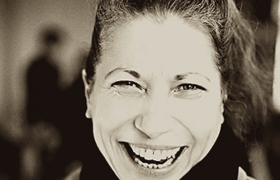
I then wrote a piece that transposed the lawbook's method into literature, and that in some sentences even consisted of the authentic legal code." "They altered my previous ideas about the literary presentation of dying and death they altered my ideas about dying and death itself. Was to discover the ways in which abstract, logically arranged language could be used for death and oppression. In his 1967 essay "I am an Ivory Tower Dweller, " Handke described in considerable detail how terrifying it This style, which scholar Nicholas Hern in his book Peter Handke described as "nonsequential, nondescriptive single-sentence statements, " was, according to Handke, influenced by his law studies. The two were excellent early examples of the style of writing that Handke would later become famous for both in his plays and in his novels. In the first work a blind man tried to reconstruct what he remembered himself and the world to be like, in his pre-blindness consciousness, while in the second work, described by critics as a Kafkaesque murder mystery, Handke explored the psychic states of dread and anxiety and their effects upon the physical world. His first novel, The Hornets, was published in 1966, followed by The Peddler in 1967. Nevertheless, although Handke began writing highly structured, short prose pieces while still in law school for a little literary magazine called Manuskripte, it wasn't until he left the university in 1965 that he actively began writing. Years later he would describe his need to write in religious terms, stating that "it was a sort of fever, almost a religious necessity, coming out of a feeling of missing something, of wanting God."

Or perhaps it was just the nature of the young man himself, who seemed forever in search of something beyond himself and the conventional world. Perhaps it was the haunting beauty and deep, mystical silences he experienced as a sensitive child growing up among the calm, majestical mountains and forests of the lake-studded Carinthian countryside that led to his early decision to enter the priesthood. He entered a Jesuit seminary while still in his teens and stayed there until 1961, when he decided to study law at the University of Graz. Born on December 6, 1942, in the small town of Griffen in Carinthia, Austria, Handke first dreamed of becoming a priest. I’d get them myself, but they’re friends of mine.There was little evidence very early in his life that Peter Handke would one day challenge the theatrical and literary conventions of his time. What’s happening? Has everything suddenly gone crazy? I don’t mean just this. I hoped to render the object - the literal body - strange by merging it with its ever-extending metaphorical self. I wanted to play with creating a strange sense of location and body by moving between different points of audition and sonic transformations of inside / outside. Thus, a whole drama of perception - across a broad spectrum of simulation - was drawn from a small world of refuse.ĭuring the recording the bottles were miked at three positions: internally, externally but close, and from a moderate distance in the room. The live percussion part was then written for the same bottles from which the initial recordings were made. Fragments of these recordings were then analysed and transformed via various electronic processes, with the resulting material composed into a ‘tape’ part. This piece was made by recording glass bottles - those that were to hand such as beer, passata and juice bottles. 8hits percussion music musician live performance composer australia brisbane avant garde biography

In many cases, these works provide a variety of unprecedented collisions of unlikely visual and musical cues. The result is a musical language that extends the existing techniques of the performing musician, and creates a synthesis of experience for audiences where music is to be seen and heard: the performative aspect of the work is as important as the aural. Since 2006 (with the premiere of the scored ballet, Concave City: A Love Story for Two Cars) she has been incorporating extra-musical parameters within the notation of a musical score, such as physical gesture, design, light and choreography. The plays examine the power and banality of public and private speech.Īustralian composer Kate Neal creates musical works that dance, and dance pieces that sing. Peter Handke calls his first three plays - Offending the Audience, Self-Accusation, and Prophecy - Sprechstücke (literally, speaking pieces).

Text: Peter Handke (passages from Self-Accusation 1966)


 0 kommentar(er)
0 kommentar(er)
